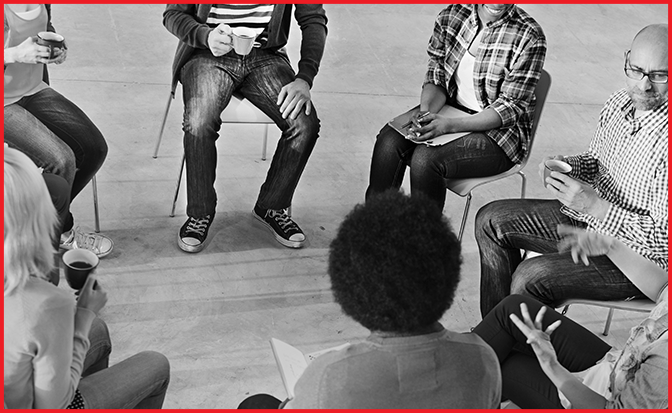Secondary trauma and caring for the caregiver
Written by Sarah Rees
To support others, we have to be in an emotionally safe space. That means recognizing secondary trauma and knowing what to do about it.
What is secondary trauma?
First, let’s start with a quick trauma refresher!
Trauma is your nervous system’s response to a distressful, life-threatening, or painful event. It impacts the way we interact with or perceive the world.
Less clinically speaking: trauma is responding to today with yesterday’s fear.
Secondary or vicarious trauma is “the cumulative transformative effect of working with survivors of traumatic life events,” so says Dr. Laurie Pearlman. It is the trauma we absorb from others.
In caring professions and life roles, we are all exposed to secondary trauma. This includes social workers, hospice workers, nurses, doctors, shelter staff, teachers, counselors, hotline operators, receptionists, nonprofit development teams, and journalists, just to name a few.
The secondary trauma stigma
It’s not a surprise that caregiving professions have such a high turnover. Carrying trauma for others becomes heavy over time. We often deplete and give of ourselves without replenishing.
As professionals in these roles, we often don’t talk about our secondary trauma for fear that we will appear weak or that our supervisors will not think we’re a good fit. We can’t fight biology, though.
Our brains are impacted by the exposure to traumatic stories and spending eight hours a day – sometimes more – in crisis makes our nervous systems react in kind.
Ever avoid a call? Ever hit snooze two (or nine) times on your morning alarm because “you can’t even today?” Ever think about work before bed and travel the black hole of “what ifs?”
Have you ever chosen not to speak at meeting because you’re not sure if you can do so without crying? I have. I still do even after 12 years in the field.
My first social work job after grad school was doing disaster service case management for those displaced and relocated to Austin from Hurricane Katrina. During that work I was interviewed for a study on secondary trauma in disaster relief.
I would respond to questions with the preface “I like my job.” It took me a while to realize that experiencing secondary trauma and talking about it out loud had nothing to do with liking my job. It took even longer to realize that I could address my secondary trauma responses with my supervisor and not be seen as a poor fit for the work or someone who needs “thicker skin.”
We lose good employees because the work we do is taxing on our whole system. If it wasn’t, we’d be robots.
That’s not new information though, right? That’s why we talk about self-care and ask in interviews, “what do you do for self-care?”
But there are a lot of things I choose not to do in order to take care of myself.
Working in disaster services, one of the things I didn’t do was watch the news or documentaries related to Hurricane Katrina. At that time, Spike Lee had released “When the Levees Broke,” and I felt as someone working in post-Katrina services that I should watch it. But I couldn’t. I couldn’t get through the first two minutes. I still haven’t watched it.
I had found a balance of things I did to replenish joy and hard boundaries I set to sustain me until that grant ended three years later.
More on self care
There seems to be pressure to answer self-care questions with: “I read, jog, and eat healthy.”
The majority of job interviews I conduct will have almost that exact response. That’s great if you do! If you don’t though, that’s also great as long as you have something in your life that recharges your batteries and allows you to recognize things that can become triggers to secondary trauma responses.
I’m often asked what documentaries I’m watching and people are surprised that my answer is, “I’m not.” For leisure, I need to steer away from the “too real,” so I spend my free time watching reality shows. Like really bad ones.
My self-care interview response would be: “being with the people I love, snuggles with my cat, ‘The Bachelor,’ therapy, roller derby, and karaoke.”
I also don’t watch the news before I go to bed, I don’t watch documentaries, I don’t read for leisure but for education, and I don’t keep friendships that make me feel like I’m back at work. I have a very specific reflection that I use to not take stories home with me.
In my work I have heard many difficult and traumatic stories, but they are not my stories. They are shared with me. I can borrow them in the moment I’m with someone, but it is not fair for me to keep a story that is not mine. That’s stealing. So I give it back when our moment together has ended. This is what I have done with the thousands of stories that I have gotten to borrow over the last 12 years.
What you can do
I invite you, caregiver, to continue to borrow stories, but make sure you return them. Talk about your secondary trauma reactions authentically with your coworkers and supervisors and normalize the reactions of our nervous systems in the same regard that we to with the individuals we serve.
Do things that lift you up and help you replenish joy, perspective, and resilience. And set boundaries around things that compromise your ability to have joy, perspective, and resilience. Get therapy. Check in with your body – it will tell you things even if you’re not ready to hear them. Just make sure to listen! We need caregivers, but not at the expense of your well-being.